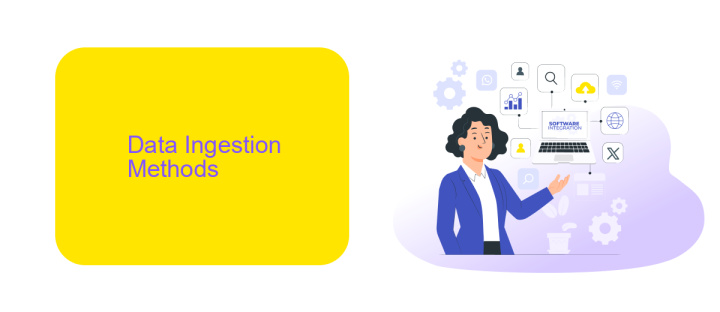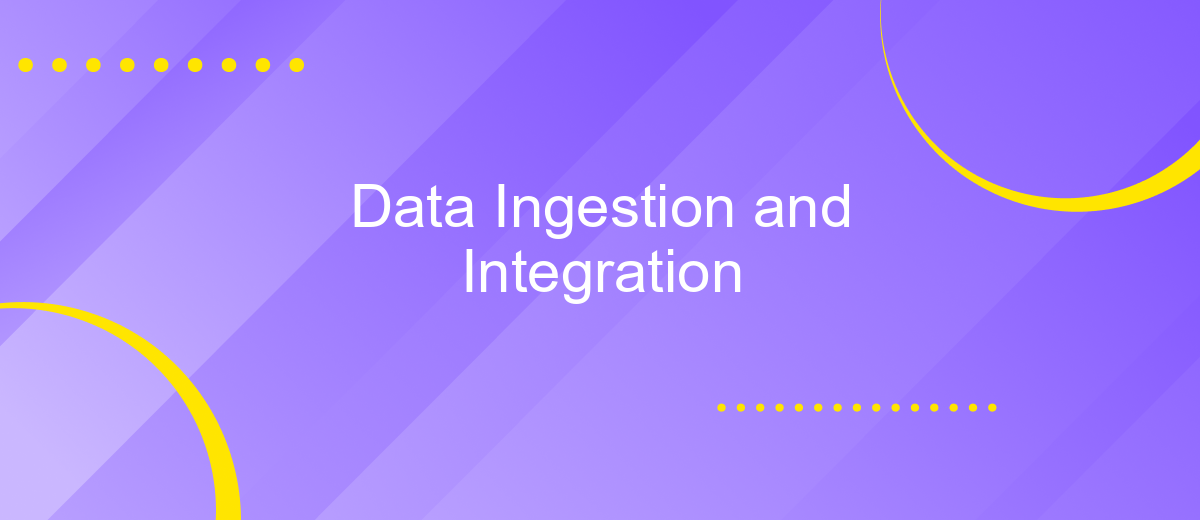Data Ingestion and Integration
Data ingestion and integration are critical processes in the modern data landscape, enabling organizations to collect, process, and unify data from diverse sources. These processes ensure that data is readily available, accurate, and actionable for analytics and decision-making. This article explores the methods, tools, and best practices involved in data ingestion and integration, highlighting their importance in achieving data-driven insights.
Introduction
Data ingestion and integration are critical processes in modern data management, enabling organizations to collect, process, and unify data from various sources for analysis and decision-making. These processes ensure that data is accurate, consistent, and readily available for business intelligence tools and applications.
- Data ingestion: The process of collecting and importing data from multiple sources.
- Data integration: Combining data from different sources to provide a unified view.
- ETL (Extract, Transform, Load): A common method used in data integration.
Tools like ApiX-Drive simplify the setup of integrations by automating data transfer between various applications and services. This allows businesses to streamline their workflows and ensure that data is seamlessly integrated, reducing manual efforts and minimizing errors. Effective data ingestion and integration strategies are essential for leveraging the full potential of data, driving better insights and more informed business decisions.
Data Ingestion Methods

Data ingestion methods encompass a variety of techniques to collect and import data from various sources into a storage system for further processing and analysis. One common approach is batch processing, where data is collected over a period and then processed in large chunks. This method is efficient for handling large volumes of data but may introduce latency. Stream processing, on the other hand, involves ingesting data in real-time, allowing for immediate analysis and action. This is particularly useful for applications requiring up-to-the-minute insights.
Another method involves using APIs to facilitate data ingestion. Services like ApiX-Drive simplify the process by providing pre-built integrations with numerous data sources and destinations. This allows for seamless data flow without the need for extensive coding or manual intervention. ApiX-Drive can automate the data ingestion process, ensuring that data is consistently and accurately transferred to the desired storage systems. These methods, whether used individually or in combination, enable organizations to effectively manage and utilize their data.
Data Integration Techniques

Data integration is a critical component in modern data management, enabling organizations to unify disparate data sources into a cohesive, actionable dataset. Effective data integration techniques ensure that data from various systems can be combined and analyzed efficiently, providing valuable insights and supporting informed decision-making.
Key data integration techniques include:
- ETL (Extract, Transform, Load): This traditional method involves extracting data from source systems, transforming it to fit operational needs, and loading it into a destination system.
- Data Virtualization: This approach allows real-time data integration by creating a virtual data layer that provides a unified view of data without physically moving it.
- API Integration: Utilizing APIs to connect different systems and enable seamless data exchange. Services like ApiX-Drive facilitate this by offering pre-built connectors and automated workflows.
- Data Warehousing: Centralizing data from multiple sources into a single repository for easier access and analysis.
Choosing the right data integration technique depends on the specific needs and architecture of an organization. Tools like ApiX-Drive can simplify the integration process, making it easier to connect various data sources and automate data workflows, ultimately enhancing data accessibility and usability.
Challenges and Considerations

Data ingestion and integration come with a variety of challenges and considerations that must be addressed to ensure seamless and efficient data flow. One of the primary challenges is handling data from diverse sources, each with its own format, structure, and protocol. This can lead to significant complexity in the data ingestion process.
Another critical consideration is ensuring data quality and consistency. Data from different sources may have varying levels of accuracy, completeness, and timeliness, which can affect overall data integrity. Furthermore, managing data security and compliance with regulations such as GDPR and HIPAA is essential to protect sensitive information.
- Data source diversity and compatibility
- Ensuring data quality and consistency
- Data security and regulatory compliance
- Scalability and performance
Using tools like ApiX-Drive can help mitigate some of these challenges by providing a platform for seamless integration of various data sources. ApiX-Drive automates the data ingestion process, ensuring that data is consistently and accurately integrated, while also supporting security and compliance requirements.


Best Practices and Tools
Implementing best practices in data ingestion and integration is crucial for maintaining data quality and ensuring seamless workflows. Firstly, it is essential to establish a robust data governance framework that includes data validation, cleansing, and transformation processes. This helps in maintaining data integrity and consistency across various sources. Additionally, using incremental data ingestion instead of bulk ingestion can optimize performance and reduce system load. Regularly monitoring and auditing data pipelines can also preemptively address issues before they escalate.
In terms of tools, leveraging platforms like ApiX-Drive can significantly streamline the integration process. ApiX-Drive offers a user-friendly interface for setting up automated data flows between various applications, reducing the need for manual intervention. Its extensive library of pre-built connectors and real-time data synchronization capabilities ensure that data is always up-to-date and accurate. Moreover, ApiX-Drive's scalability and flexibility make it suitable for businesses of all sizes, enabling them to adapt quickly to changing data requirements.
FAQ
What is data ingestion and why is it important?
What are the common challenges in data integration?
How can automation help in data ingestion and integration?
What are some best practices for data ingestion?
How do you handle real-time data integration?
Time is the most valuable resource for business today. Almost half of it is wasted on routine tasks. Your employees are constantly forced to perform monotonous tasks that are difficult to classify as important and specialized. You can leave everything as it is by hiring additional employees, or you can automate most of the business processes using the ApiX-Drive online connector to get rid of unnecessary time and money expenses once and for all. The choice is yours!

